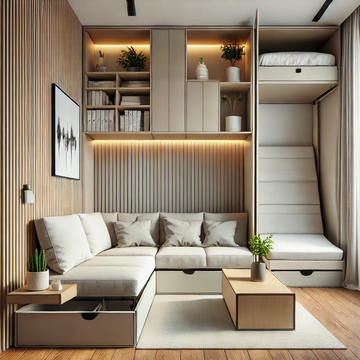Why Choosing the Right Camera Matters
Let’s face it—picking the right camera can feel like a huge decision. After all, it’s not just about capturing memories; it’s about getting the perfect shot every time. Whether you're a budding photographer or a seasoned pro, the debate between DSLR and mirrorless cameras often comes up. Ever felt overwhelmed trying to decide which camera fits your needs best? We've all been there. Understanding the differences between these two types of cameras can make a world of difference in your photography journey. So, let’s break it down and find out which one suits you best!
Step 1: Understanding DSLR Cameras
What’s a DSLR?
A DSLR (Digital Single-Lens Reflex) camera has been the go-to for many photographers for years. These cameras are known for their classic design, featuring a mirror that flips up when you take a shot. This mirror reflects light from the lens up into an optical viewfinder, letting you see exactly what you’re about to capture.
Advantages of DSLRs
If you’ve ever used a DSLR, you know they offer fantastic image quality. The large sensors in DSLRs help capture stunning, detailed photos with rich colours. Battery life is another plus—DSLRs typically last longer between charges compared to their mirrorless counterparts. And with a wide range of lenses available, from wide angles to macros, you’ve got the flexibility to tackle any shot.
Drawbacks of DSLRs
However, DSLRs aren’t perfect. Their size and weight can be a bit much, especially if you’re used to a lighter setup. The mechanical mirror mechanism also means there are more moving parts, which can be prone to wear over time.
Step 2: Exploring Mirrorless Cameras
What’s a Mirrorless Camera?
Mirrorless cameras, as the name suggests, don’t have the mirror found in DSLRs. Instead, they use an electronic viewfinder or the camera’s screen to show you what the sensor is seeing in real-time. This design makes them more compact and often more lightweight.
Advantages of Mirrorless Cameras
Mirrorless cameras have some impressive perks. They’re generally smaller and lighter, making them easier to carry around. They also tend to offer faster autofocus and continuous shooting speeds, thanks to advanced technology. Plus, many mirrorless models come with cutting-edge features like high-resolution electronic viewfinders and improved video capabilities.
Drawbacks of Mirrorless Cameras
But there are a few things to consider. Battery life in mirrorless cameras often doesn’t match that of DSLRs, which means you might need to carry extra batteries for a full day of shooting. Also, while the lens selection is growing, it’s still not as extensive as what’s available for DSLRs.
Step 3: Comparing Performance and Image Quality
Autofocus and Burst Speed
Ever tried to capture a fast-moving subject and missed the shot because your camera couldn’t keep up? DSLRs traditionally had the edge in autofocus, but mirrorless cameras are catching up with rapid advancements. If you’re into sports or wildlife photography, you’ll appreciate the quick burst speeds and accurate tracking in many modern mirrorless models.
Low-Light Performance
If low-light photography is your thing, both camera types offer good performance, but DSLRs tend to shine in this area due to their larger sensors. However, mirrorless cameras are improving rapidly, and some high-end models perform exceptionally well in dim conditions.
Video Capabilities
Thinking of getting into video? Mirrorless cameras often have an advantage with superior video features, like 4K recording and better in-body stabilisation. If you’re shooting a lot of video content, a mirrorless camera might be worth considering.
Step 4: Considering Ergonomics and Usability
Size and Weight
When it comes to comfort, mirrorless cameras win out due to their lighter build. If you’re carrying your camera around all day, the difference in weight can be a game-changer. DSLRs can feel cumbersome after a while, especially with a heavy lens attached.
Controls and Battery Life
Both types have their quirks in terms of controls and battery life. DSLRs often have more physical buttons and dials, which some users prefer for quick adjustments. Mirrorless cameras may rely more on touchscreen controls, which can be a bit different if you’re used to the traditional setup.
Step 5: Evaluating Lens and Accessory Options
Lens Availability
If you’re building a collection, DSLRs currently offer a broader range of lenses, especially if you’re looking for older or specialised ones. However, mirrorless cameras are catching up fast, with an increasing number of lenses and accessories becoming available.
Accessory Compatibility
When it comes to accessories like flashes and grips, DSLRs have a bit more variety due to their longer presence in the market. That said, many mirrorless cameras are now compatible with a wide range of accessories, so you won’t miss out on the extras.
Step 6: Budget and Long-Term Investment
Cost Considerations
DSLRs and mirrorless cameras can vary significantly in price. While high-end models of both types can be pricey, you might find that mirrorless cameras offer more advanced features for the same or less money compared to DSLRs. Consider not just the initial cost but also the potential ongoing expenses for lenses and accessories.
Resale Value
DSLRs have been around longer and often hold their value well. However, as mirrorless cameras become more popular, their resale value is also strengthening. Think about how long you plan to keep your camera and whether you might want to upgrade in the future.
Ready to Make Your Choice?
So there you have it—a comprehensive guide to help you choose between a DSLR and a mirrorless camera. Whether you’re drawn to the classic feel and robust build of DSLRs or the sleek, modern design of mirrorless cameras, there’s a perfect fit for every photographer out there. Test a few models if you can, and see which one feels right in your hands. Happy shooting!




